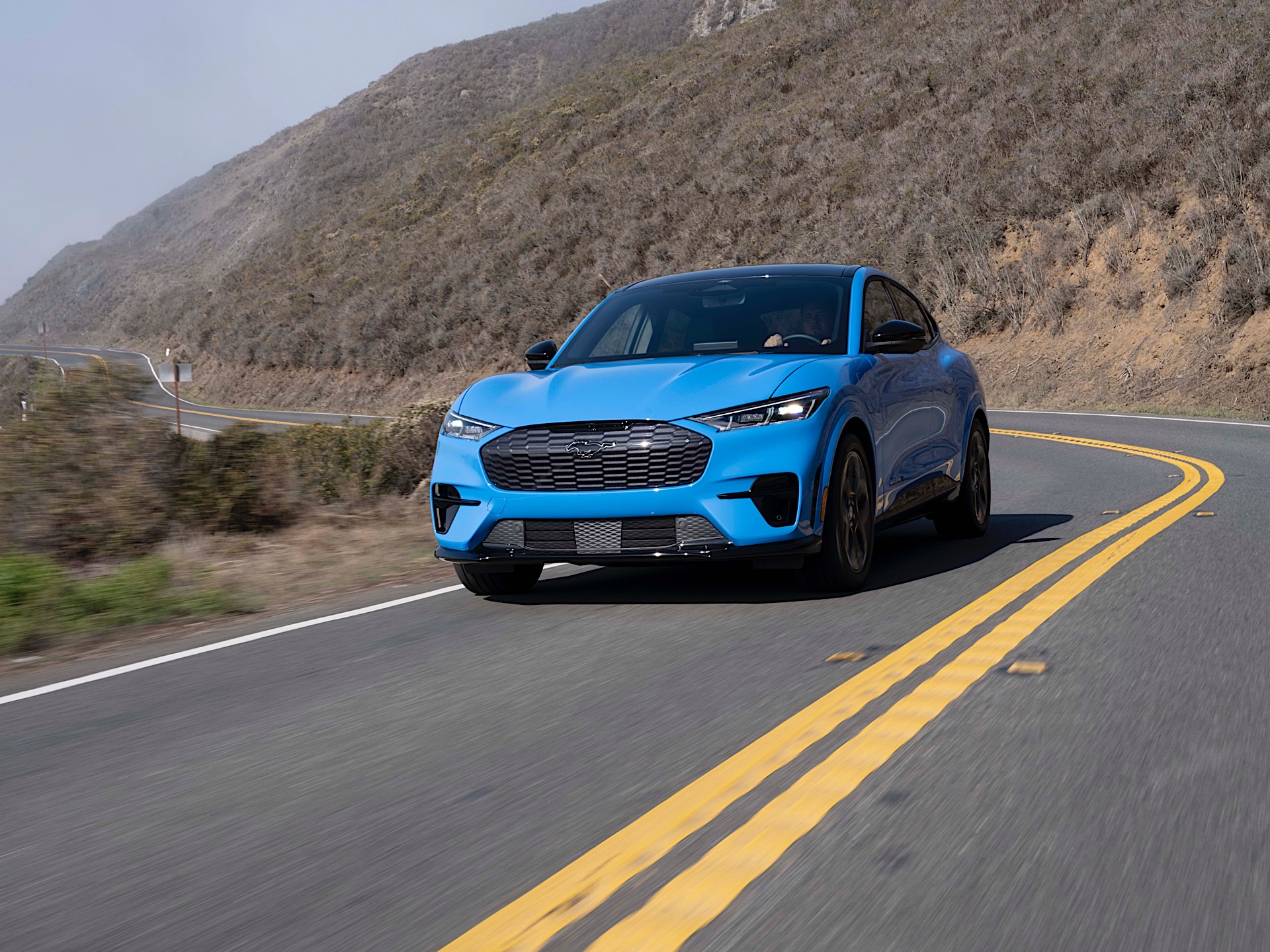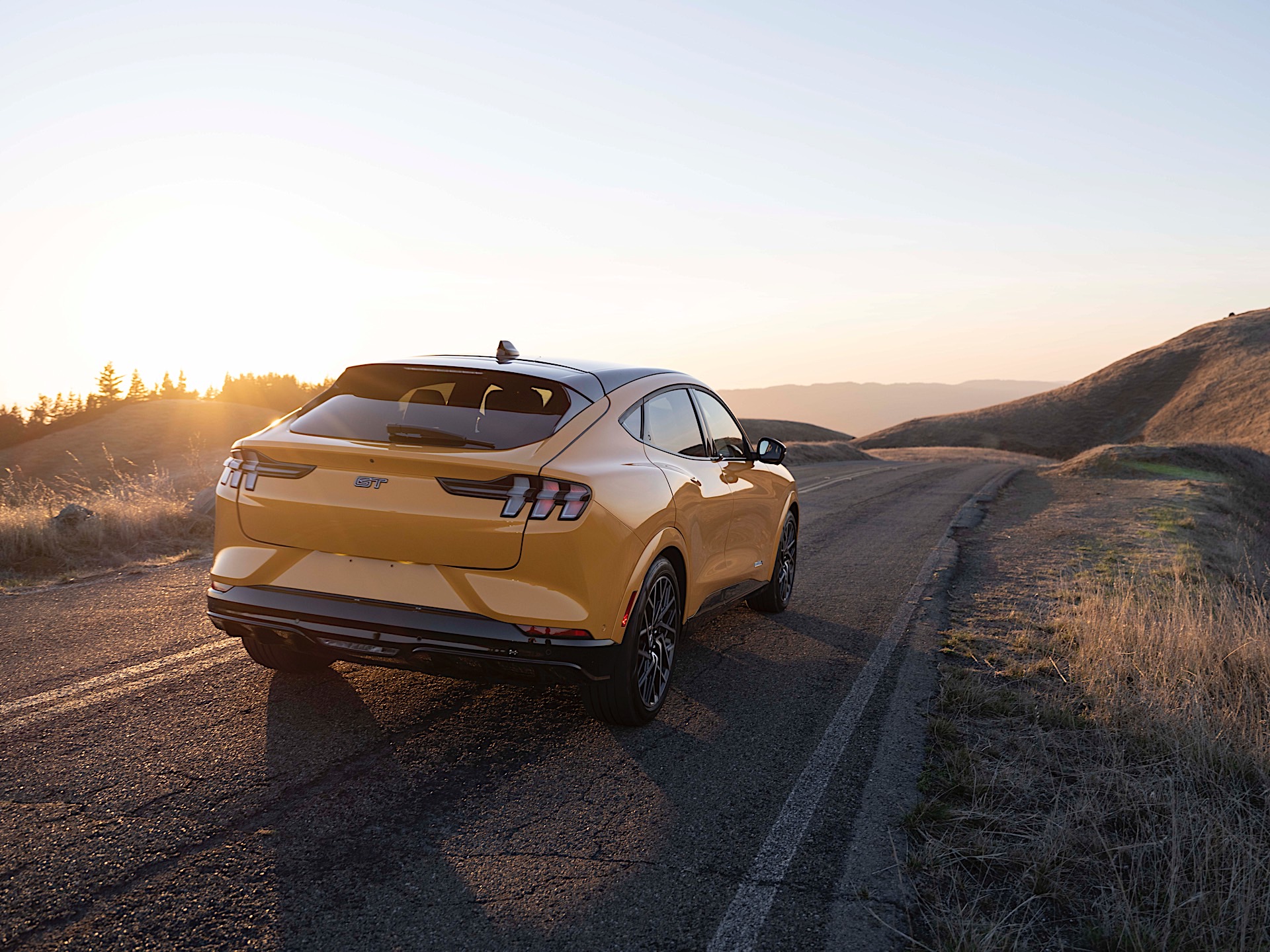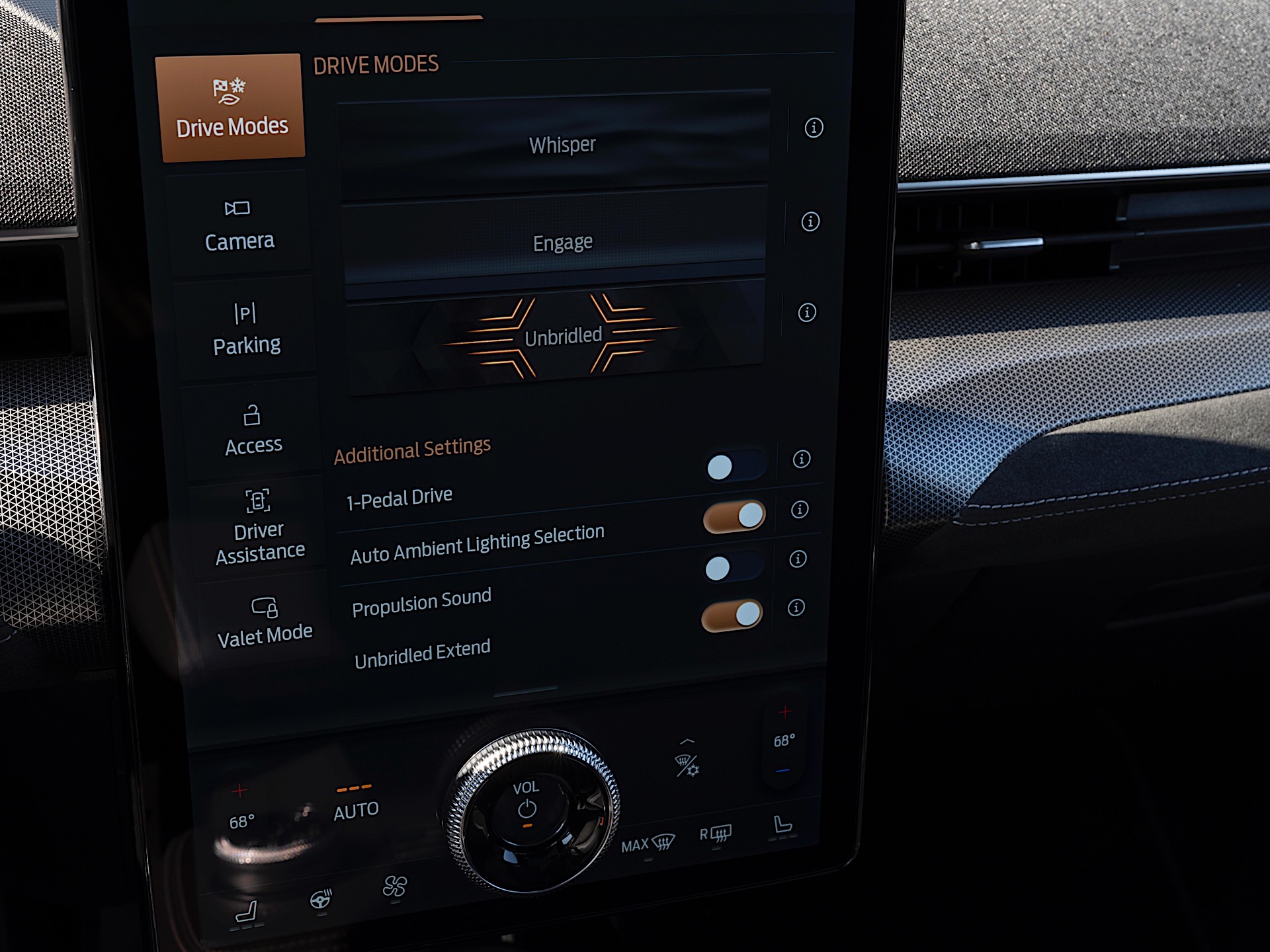As we near the end of the 2021 calendar year, there are still some folks out there who want to litigate whether or not a Mustang Mach-E is actually a Mustang. It doesn’t matter if that’s what Ford calls it or not, there’s some sort of “heritage” reason why it’s not. For those doubters, we’d suggest getting behind the wheel of the new GT version of the Mustang Mach-E.
It’s everything you’d expect from a performance Mustang and more.
The Mustang Mach-E GT has an 88 kWh battery and two permanent magnet electric motors. The result is 480 horsepower and 600 lb-ft of torque sent to all four wheels. Ford claims a 0-60 mph time in 3.8 seconds.

If that’s not enough performance for you, opting for the upgrade to the Performance Edition increases torque to 634 lb-ft (horsepower remains the same) and the 0-60 mph time is reduced to 3.5 seconds.
Additional reasons to go to the Performance Edition include the MagneRide magnetic suspension, Pirelli summer performance tires, and seats with more bolstering.
According to Ford, buyers are “over-indexing” into the Performance Edition, which means that’s what most buyers are looking ordering.
Also for 2021 — though it might change for 2022 — Cyber Orange and Grabber Blue are Mach-E GT special available colors.
In normal driving, the GT drives a lot like a dual motor Mach-E non-GT. We’re pretty big fans of that car and you can get all of the details on our drive of that here. But when you put your foot down in the GT, you accelerate a lot quicker.
In most driving modes there’s a boost function when you put your foot down that lasts for up to 5 seconds and provides peak performance. It also causes a bit of torque steer from the front axle, which is something we don’t normally experience in an all wheel drive car.

It’s not an uncontrollable amount, and adds to the sense of theater when accelerating. We’d still prefer it not torque steer, though.
The base GT suspension is fine, if a bit on the stiff side. Electric car suspensions tend to be a bit stiff, regardless, because they have to support the weight of the car. But on the bumpy roads among the Redwoods north of San Francisco, it can be a bit jarring.
The Performance Edition helps a lot with that because of the suspension. MagneRide dampers adapt to the road surface hundred of times a second, and the technology is similar to what GM uses in its street and race cars, along with Ferrari.

In a normal comfort setting, they smooth out the bumps quite nicely. The ride is still a bit firm, but much more manageable than the base car, or the standard suspension on the Tesla Model Y. When in Unbridled mode, the dampers stiffen up in a controllable way that helps keep all four wheels planted to tarmac even when the road is bumpy.
The dampers give you comfort when you want it, and better control when you need it. They alone are worth the upgrade to the Performance Edition.
One other trick that comes with the GT (both standard and Performance Edition models) is a new drive mode called Unbridled Extend. When this mode is enabled, the car because much more aggressive in active thermal management of the battery, prioritizing repeatability of track performance over overall range and efficiency. For an autocross or track day, Ford recommends using this mode to prevent loss of performance.
Unbridled Extend also pulls way back on the traction and stability control systems. Ford set up an autocross course for us to experience the car, and it’s easy to induce rotation and even get the car to slide with the tail out. Stability control can also be fully defeated, if the driver chooses, which is impossible on a non-GT car.
Interestingly, though, is that at the drag strip you might not want to use Unbridled Extend. Why? Because Ford disables the additional boost in that mode. For quick jaunts down the quarter-mile, you might actually be slower.
In fact, you are. How much? We took a Mach-E GT Performance Edition to the drag strip for an upcoming video and we have all the numbers. While we don’t want to spoil the surprise, it’s safe to say if you’re going to the strip, keep it in Engage.
Finally, we like the seats better in the GT Performance Edition over the standard GT. The little extra bolstering actually adds to overall seat comfort. These aren’t “grip your kidneys until you can’t breathe” Recaro seats like in other Mustangs, but really do add to the experience without sacrificing day-to-day livability.

And that’s what you get with the Mach-E GT: everyday liability. It’ll do everything you need it to during the week, and then you can drive it to the track and have a black, and then you drive it home to start the new week.
The standard Mach-E GT starts at $61,095 with delivery and the Performance Edition starts at $66,095. We totally think the Performance Edition is worth the $5,000 upgrade, even if that makes for one expensive Mustang.
Also, all Mach-Es are currently still eligible for the federal $7,500 tax credit plus any local or state incentives. The Tesla Model Y Performance, which doesn’t qualify for the federal tax credit currently, splits the difference at $63,190.
Be sure to stay tuned for a future update where we take the Performance Edition to the drag strip where we track performance loss as the battery depletes.
If you’re thinking you want to get a Mach-E, get your order in. Wait times are long with supply chain issues still plaguing the automotive industry, and this is a car you’re likely going to want to get.

